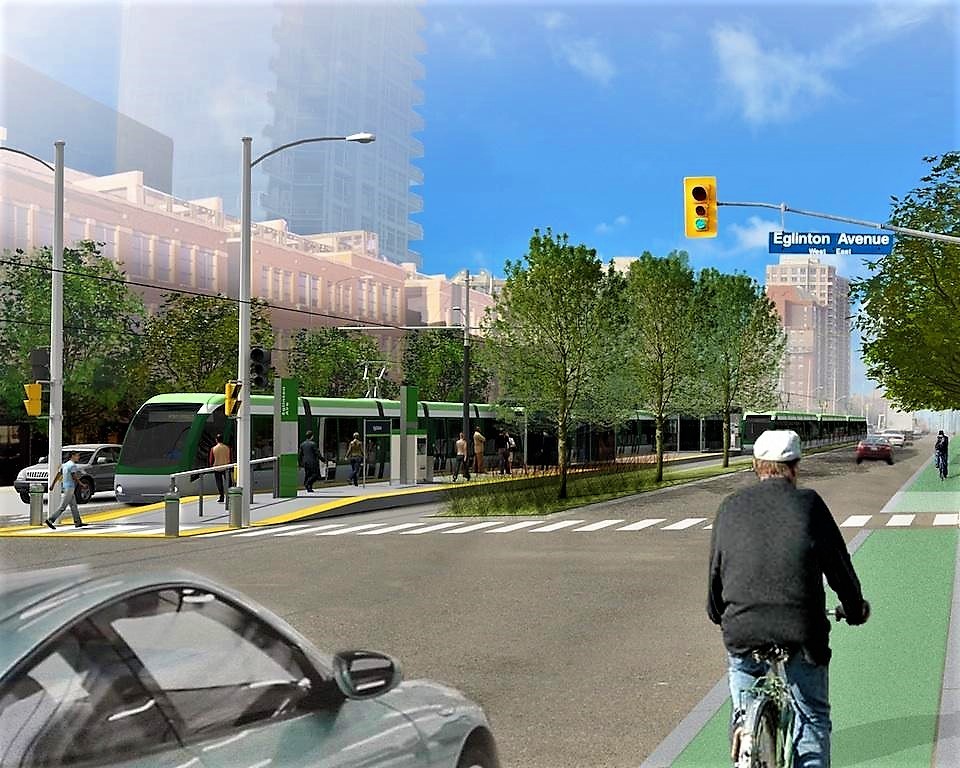
Development along the Hurontario LRT will change Mississauga forever
Imagine your favourite city.
Where are you picturing?
Paris, perhaps. For some, the throng of busy streets such as Champs-Élysées and a bustle of people is the feeling that comes to mind. Others take pleasure in the memory of fresh coffees enjoyed on outdoor patios, flaky croissants or exquisite cuisine. Many may consider the world-renowned museums, or even its incredible sporting scene, like the final stretch of the Tour de France or a tennis match on the red clay of Roland Garros.
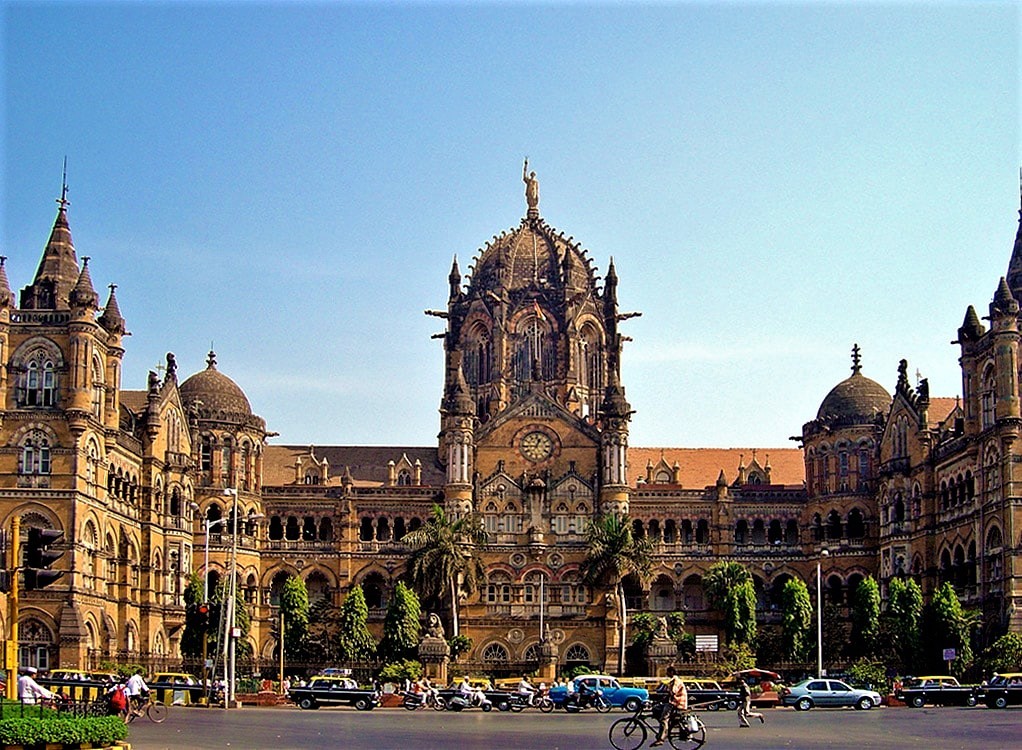
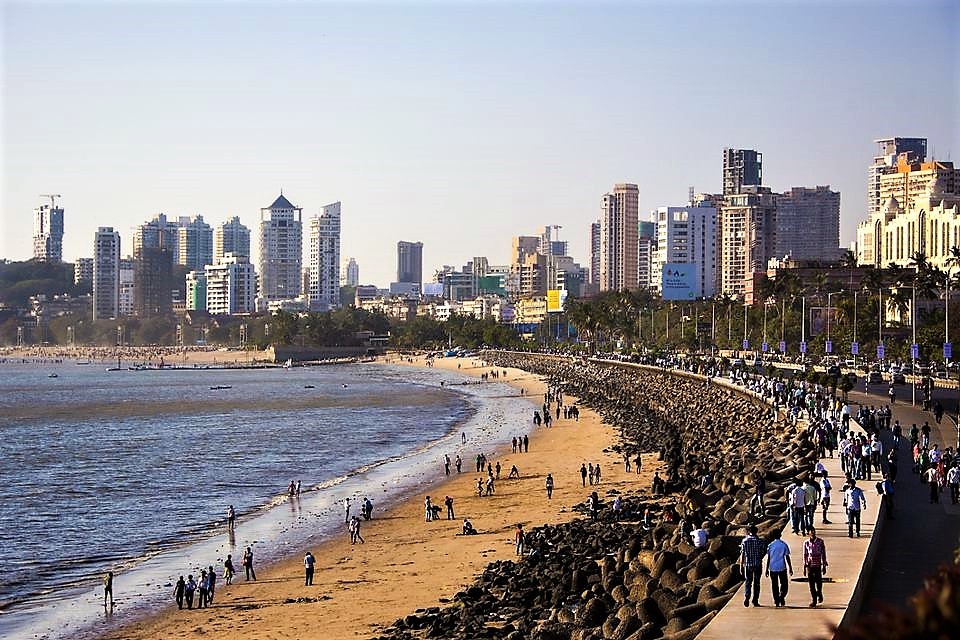
The old and new shape marvelous Mumbai
Maybe you’re thinking of Mumbai, the heaving metropolis that hosts the world’s largest film industry – with its post-modern skyline that rings Bandra and Juhu beach, and the architectural legacy around the Gateway of India where people flock near the tip of the teeming city’s peninsula that points out to the Arabian Sea.
You could even imagine Toronto. If that’s the case, the iconic CN Tower, which defines one of the best known skylines in the world, springs to mind. The city’s bowed waterfront, its picturesque Distillery District or shopping scene around Yorkville are haunts popular with tourists from around the world.
But you’re probably not thinking of Mississauga.
Over the next few decades, that may change.
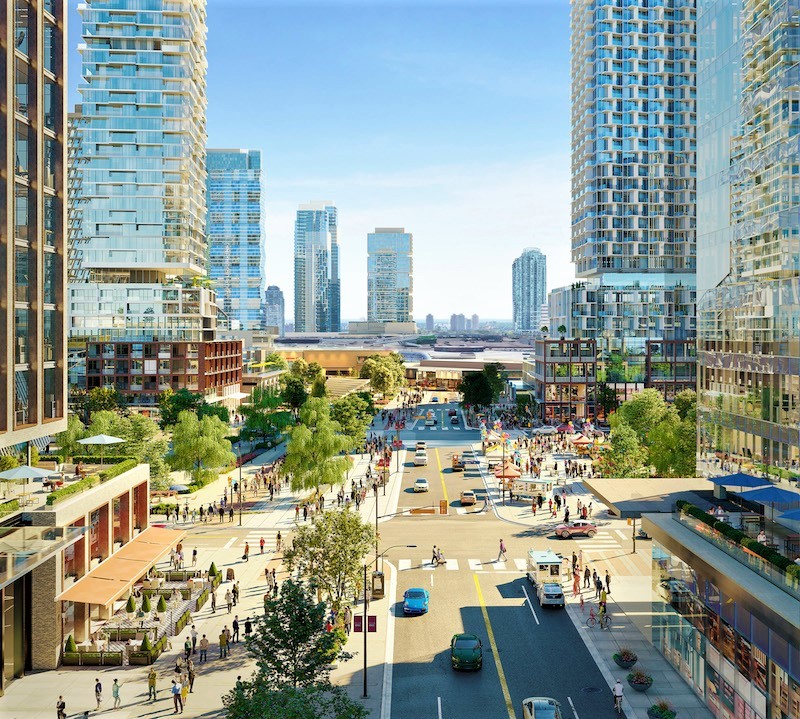
The "Strand" next to Oxford Properties' Square One plan
The development Canada’s sixth largest city is currently undergoing is almost as unprecedented as the COVID-19 pandemic that overshadows it right now.
Mayor Bonnie Crombie, her councillors and a determined staff are pushing through changes that should help define the city for generations to come.
They range from establishing a brand new organization in charge of tourism to pushing for more public transit and lower greenhouse gas emissions. At the heart of these new initiatives — that aim to make the city more walkable, notable and enjoyable — is the Hurontario LRT.
The project is the epitome of Mississuga’s mission to shed its suburban past and embrace its future as a dense, modern city.
In order to achieve its dream, the city’s very core must change. The fabric of bricks and mortar that defines it will need to develop and grow, morphing into taller, glassier forms.
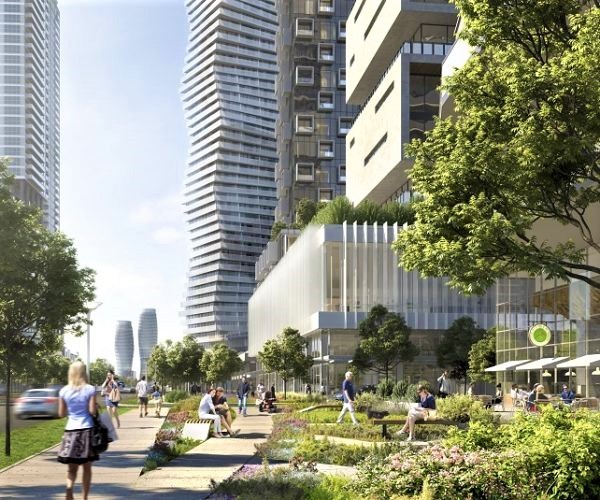
Rogers' M-City plan
Every year, some of the city’s single-detached houses and sprawling buildings will make way for new, urban developments. Already, city hall can boast a host of new projects; many of Canada’s most exciting developments are being planned.
In January, the announcement of 37 residential towers in the parking lots around Square One Mall was heralded from coast to coast. The plan represented the single biggest conversion of retail parking space into residential units in the country. Lakeview Village on the city’s waterfront has been hailed with equal excitement, a pioneering new residential project on the shores of Lake Ontario.
As the Hurontario LRT has progressed, with the project officially starting at the end of March when shovels went into the ground, its route has been at the heart of this resurgence. The 18 kilometres that will border the light rail system are proving to be fertile ground for developers who hope the seed of their applications will flower into iconic new metropolitan forms.
This is not the asteroid belt of post-war suburban built form, dominated by cars and vast stretches of sprawling asphalt and low-slung commercial plazas.
The high order transit project promises to complete the transformation from that isolating past, and is due to be delivered by Fall 2024. But is already attracting new development applications and residential projects of epic scale.
Paris, Toronto and Mumbai were also once relatively sparse, loosely connected communities, before visionaries created the cities they are today.
Now, with one of the longest stretches of undeveloped urban waterfront and many other parts of its vast canvas waiting to be filled in, it is Mississauga’s turn to determine its future form.
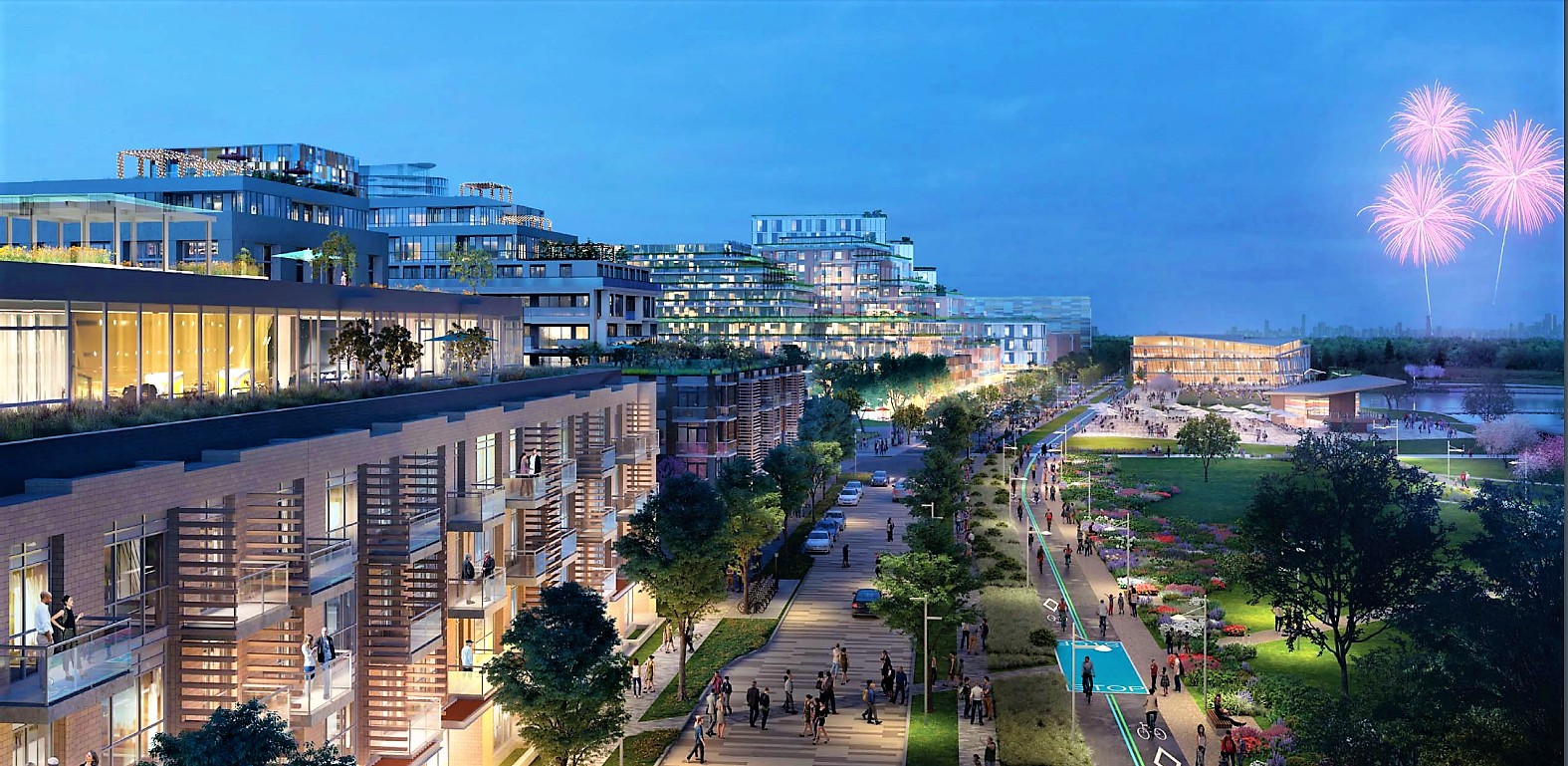
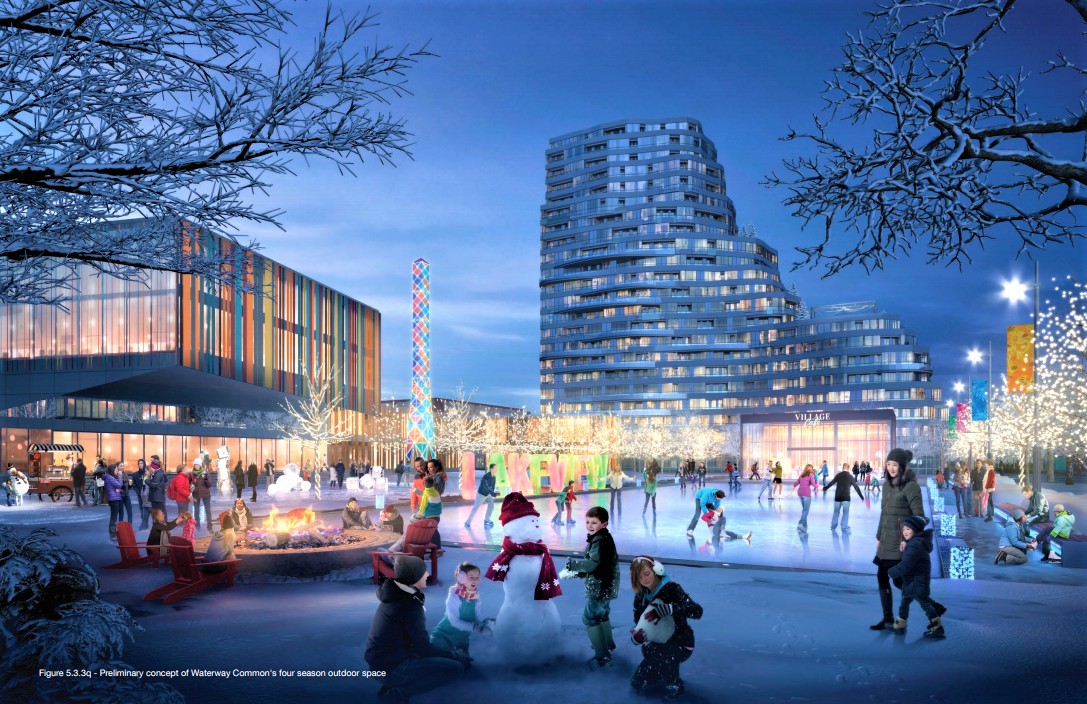
The waterfront and skating in the future Lakeview Village
One application that represents this exciting new growth is the development of six condominium towers on Eglinton Avenue, where it intersects with Hurontario Street. The project, being pushed by Liberty Development, has been in the cards since 2018 with a revised application submitted to the City of Mississauga in early 2020.
The current application, which the city says is working through recommendations before it comes to the Planning and Development Committee for approval, calls for 13, 19, 24, 25, 35 and 37-storey towers to be built. The building heights have been scaled down from their original proposals to appease the city, to prevent the mistake so many other urbanizing municipalities have made when confusing verticality for majesty.
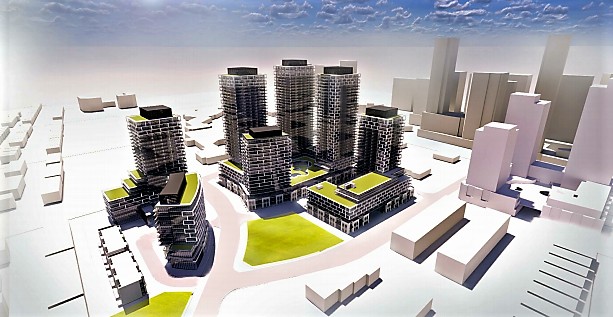
A rendering of the proposed development along Eglinton
In its marketing material, the new Eglington project makes no secret about the fact Mississauga’s soon-to-be-born LRT is its driving force. The brokerage website for the new project, handled by RE/MAX, makes reference to Mississauga as a “rising star” thanks to the LRT, also boasting that the new apartments will be built “steps from a stop” on the route.
Elsewhere on its 18-stop line, other development applications have come in along Hurontario Street. These are not quite on the same scale as the Eglinton proposal, but the same principles motivate them: put people close to a rail system that can quickly get them where they want to go and keep cars off the street so cities can be built for people, not automobiles.
Significant development is planned around Port Credit GO, which links with Hamilton, Toronto and the Hurontario LRT, while Edge Towers between Fairview and Burnhamthorpe Road are also being sold using the draw of light rail transit at one’s fingertips.
“Convenient transit is literally at your door,” the Edge Tower website reads. “Enjoy the benefit of the only new downtown Mississauga high-rise project that borders right on the future 18-km LRT Transit Line, slated to be operational from Brampton to Port Credit by 2024.”
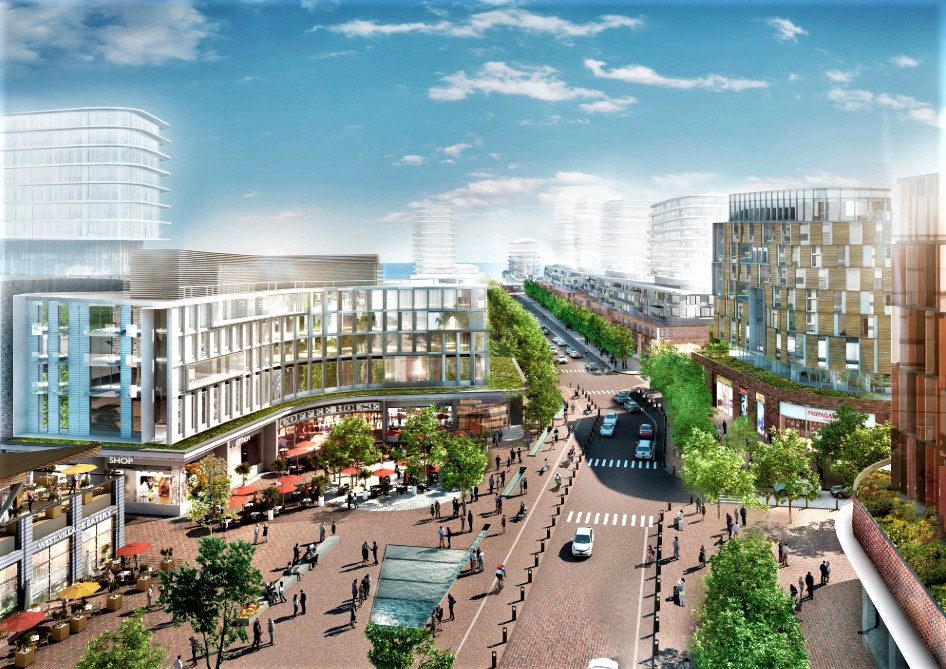
A new-look Port Credit is also being planned at the foot of the LRT
It is a well established fact in city building that higher order transit systems attract significant new development. This happens for a myriad of reasons ranging from the appeal of sleek modern movement (personified by an LRT) to reduced need for parking and improved connectivity.
A case benefit study for the Hurontario LRT, published by consultancy group Steer Davies Gleave in 2016, found the project would bring a “development potential/land value uplift” of between $200 and $420 million. That study captured a route that still included a loop around Mississauga’s downtown, but is not far removed from the line that has begun construction.
The figures are a tiny fraction of the overall construction value attached to future projects in and around the LRT corridor, which the City projects will be in the tens of billions of dollars.
The ION rapid transit line in Kitchener and Waterloo, which opened in 2019, is regularly cited in Canada as an example of the benefits of an LRT for city development. Between 1995 and 2002 (when the project was announced) there were roughly $937 million worth of development applications along its route. From 2011 (when the regional council moved ahead with the project) to 2019, the value of investment was more than $3.2 billion.
A study shared in 2019 by the Canadian Urban Transit Association saw similar benefits to Calgary’s Green Line. A cost and benefit analysis up to 2046 found the project would result in an increase of property value along the city’s LRT corridor of $4.7 billion, accounting for significantly higher city and provincial tax revenues. Between 2017 and 2026, it also estimated it would create 20,000 direct and indirect jobs.
If all the developments on the table right now come to fruition, they will revolutionize Mississauga’s downtown. Instead of a couple of towers in the vicinity of Square One and City Hall, the Eglington project, Square One District, Rogers’ M City, Oxford’s monster 37-tower plan and others will arrive together to create a city centre nothing like the sprawling expanse that has defined Mississauga for decades.
Linking them all into one cohesive, walkable city that stretches along a Great Lake, will be the Hurontario LRT.
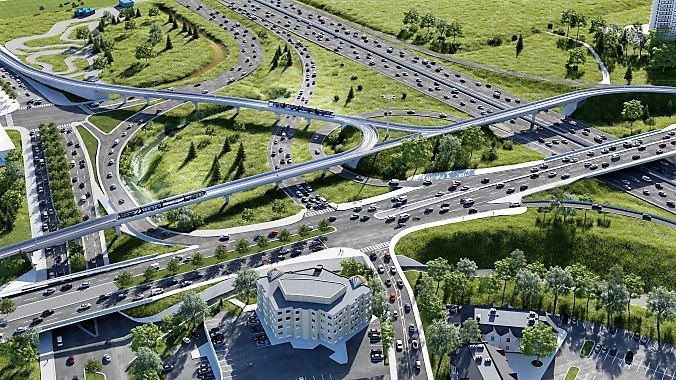
The LRT flyover will avoid disruption of other transportation around the 403 Highway
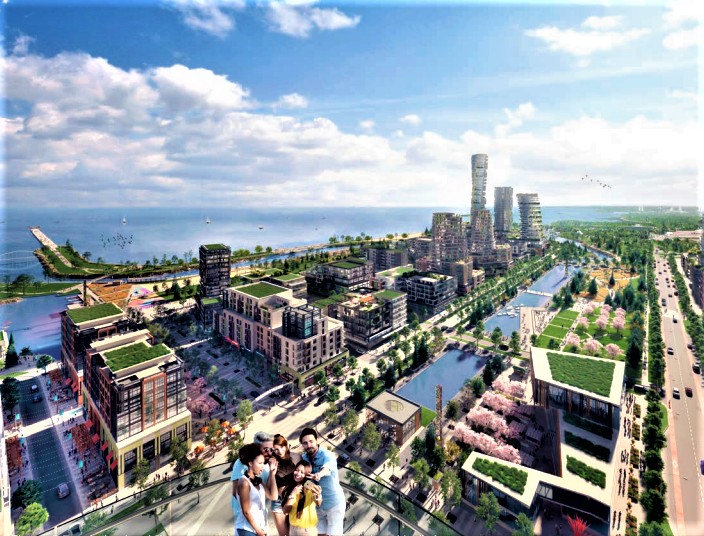
The future waterfront at Lakeview
If that idea, an aspiration in the soul of planning documents for now, becomes a reality, Mississauga might become one of the cities people recall when asked about their favourite urban draw. It may even become known for stunning architecture, vibrant outdoor spaces, arts and culture – and a modern system of rail transportation.
Email: [email protected]
Twitter: @isaaccallan
Tel: 647 561-4879
Submit a correction about this story


